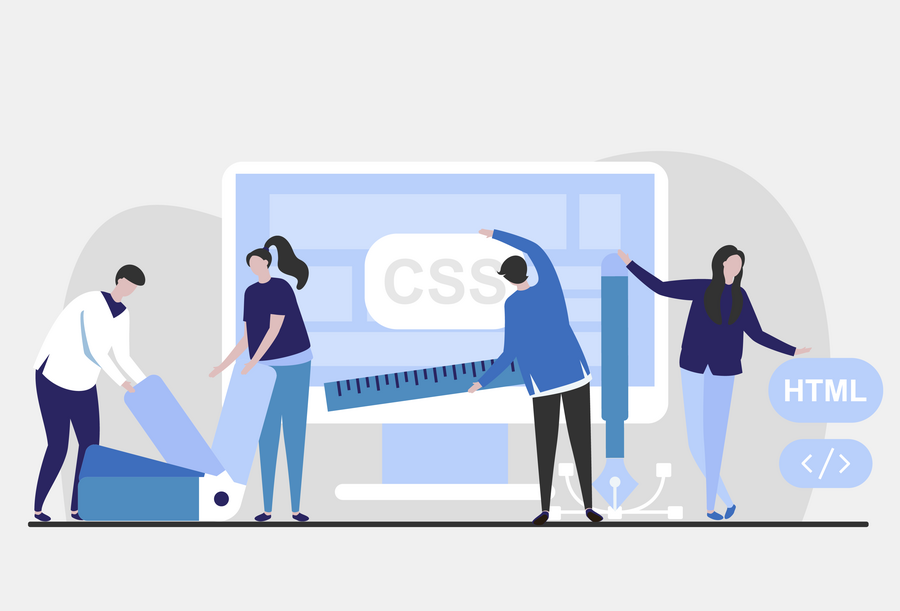Websites generally consist of two parts: the frontend and the backend, and both terms are very commonly used in the IT industry. The frontend refers to the user interface, while the backend describes the server, application and database running in the background to provide the user with the information they require. Frontend developers work on what is visible when using the application, while backend developers build the infrastructure that supports the frontend. All these specialists are essential during the process of building modern web applications - by working together, highly functional and visually appealing systems can be created.
Frontend, or user interface elements
The frontend encompasses everything that the target user sees, and is therefore the presentation layer of web applications. Professionally speaking, the frontend is the code responsible for visually presenting to the viewer the information that the site requires. In addition, it also includes storing, presenting and updating data received from the backend. The main tasks of those responsible for frontend programming include creating intuitive and functional interfaces that are user-friendly - they focus on creating elements that are visible to the general public. Their task is to code the visual parts of the web application, responsible for interacting with the viewer (e.g. changing the colour of a button when the cursor hovers over it, etc.). Programmers also implement interactive, visual and navigational elements such as layouts, forms, graphics, animations, images, etc., so all these parts must form a clear whole. A properly prepared front-end layer is distinguished above all by its intuitive operation and accessibility, high level of aesthetics or modern graphic design.
Backend, or back office of the website
The backend is the structure that is responsible for the functioning of the application, i.e. it focuses on the internal operating logic or interaction with servers and databases. In order to ensure that the application is as functional as possible, the developers use various programming languages to make it even more efficient with the updates they make. Backend programming therefore focuses on storing and organising data, while ensuring that the frontend functions properly. In other words, it deals with creating what those using the website or application do not see, i.e. the inner layer. This is everything that happens on the server - writing, storing and delivering information from the database to the application. The backend is responsible for what happens on the server after the recipient has performed an action, e.g. clicking a button, cancelling an action in the application and so on. However, it is worth noting that users do not interact directly with the backend of the website, but will take action with frontend elements that rely on a well-built back-end. Properly written backend code is characterised by high system performance, fast performance and proper scaling, and therefore better application performance.
Summary of differences
The collaboration between frontend and backend developers is crucial when developing web applications. Their tasks, although different, complement each other, enabling the preparation of well-designed products. In the table below, we summarise the differences between the goals of the two types of programming.
| Criteria | Frontend | Backend |
| Visibility | Visible | Invisible |
| Form | Code the visualizes information for the user | Code that interacts properly with the database |
| Compute area | Browser | Server |
| Responsibility | Looks | Logic |
| Working with data | Downloading from the users, transmitting to the backend and presentation of results | Saving, storing and proving data |
| Users | Interact with the visual elements of the web application | Interact with the backend via the frontend |
| Programming | Interface | Internal layer |
| Programmers task | Implementation of interactive, visual and navigational elements | Code development and database management |
| Characteristics of good project | Intuitive operation and accessibility High level of aesthetics Modern graphic design | High system performance Fast application performance Scalability |





